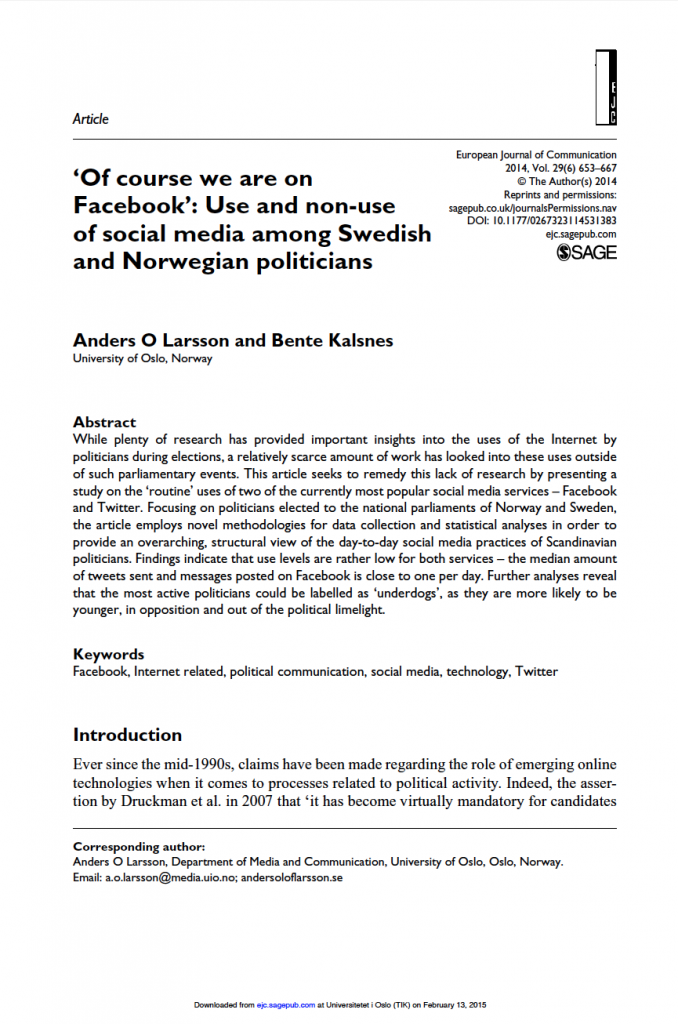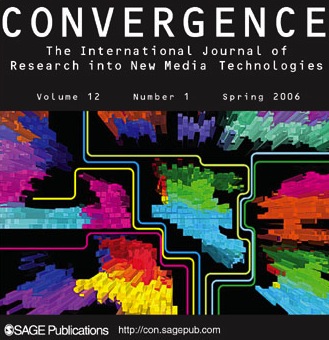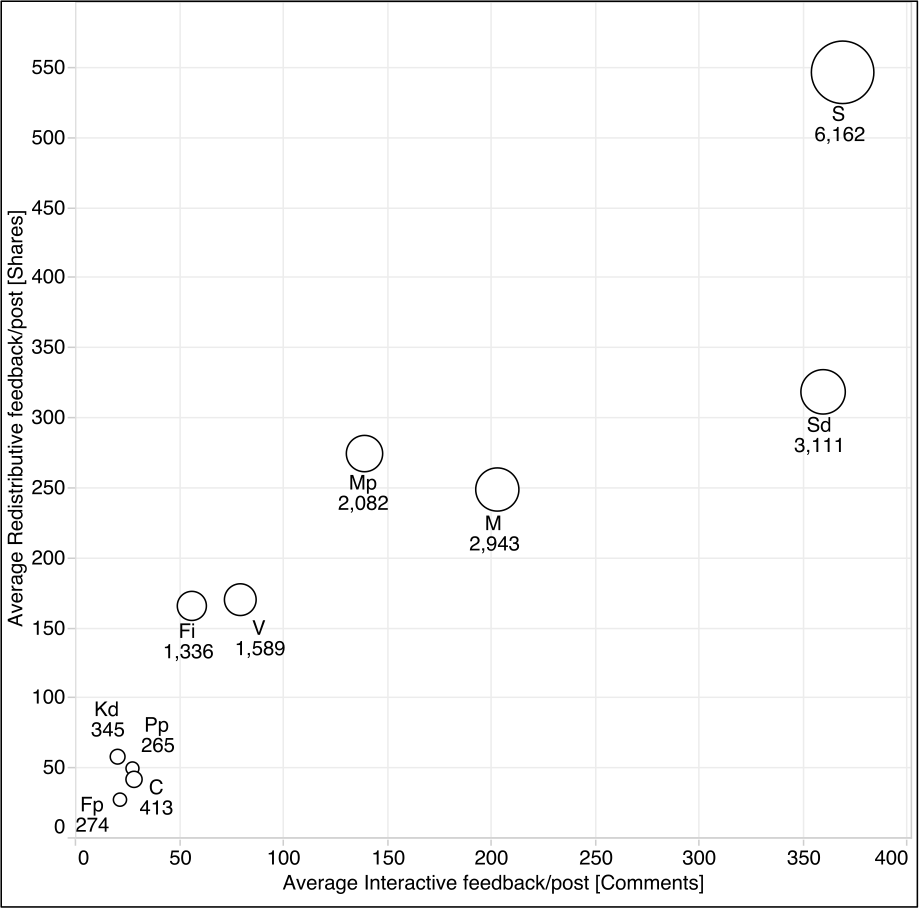
I was asked to review Nick Couldry’s Media, Society, World: Social Theory and Digital Media Practice for European Journal of Communication (published in volume 30, issue 3). Below you will find the pre-print version (also available at academia.edu and ResearchGate).
— — —
The broader field of media and communication studies incorporates a vast array of theoretical perspectives that have been and still are applied to further our understanding of what the media are, how they function and what results (or even ‘effects’ – if there ever was a value-laden word within the field, this is it) our everyday interactions with and through media could be expected to have. Undergraduates are – or at least I was – brought up learning the early history of the field as an almost steady march from “All-powerful media”, understood theoretically through metaphors of ‘hypodermic needles’ or magic bullets’, to latter periods where such power was vested in the recipients of media content – power to the people, if you will. Theories like Uses and Gratifications, for example, suggested that the preferences and goal orientations of individual media consumers would lead them to specific media content, rather than consuming any content that came into their path (e.g. Blumler and Katz, 1974).
In his book Media, Society, World: Social Theory and Digital Media Practice, Nick Couldry embarks and expands on a somewhat similar approach. Specifically, Couldry makes the case for what he labels as a ‘practice approach’ to media and communication studies. He notes that while the aforementioned Uses and Gratifications perspective largely focused on individual, personal uses of specific media content in specific media channels, these diverse media channels or outlets have today become interlocked to the point where the only suitable starting point for an endeavor such as this would be ‘the media environment’, not specific media considered in isolation from each other. Similarly, while individual use is still of the utmost relevance for Couldry, he suggests an approach more akin to a macro level rather than the micro variety often focused on in combination with the Uses and Gratifications approach. Essentially, then, the practice approach, or media practice theory, suggests a focus on questions like “what are people doing that is related to the media?” (Couldry, 2012:35). Couldry does an excellent job at contextualizing what could perhaps be understood as a re-conceptualization of audience studies by suggesting that practice theory be understood as socially oriented media theory – one of four overarching perspectives of media and communication research (the other four being the political economy of media, medium theory and textual analysis). These four are outlined in a helpful graph included at the beginning of the book, which provides a suitable point of entry into Couldry’s thinking and suggestions about the larger areas of the field.
The suggested practice approach is arguably the key contribution of Couldry’s ambitious and meticulously researched text. Throughout the book, the author draws extensively on scholarship from a series of different academic traditions – most notably sociology and media and communication studies – to build his case. The concept of media practice wishes to uncover the ways in which people integrate media into their everyday lives in almost tacit, implicit ways – in order to meet our many diverse human needs. For Couldry, the media are (almost) everywhere, a line of thought that – with some obvious variation – has been touched upon recently also by others (e.g. Deuze, 2012). However, Couldry also makes his case by providing a series of theories more applicable with regards to empirical research, thereby making the book an even more interesting read. Given the authors interest in the humdrum of everyday life in relation to media use, I was nevertheless somewhat surprised to find very little reference to the work of scholars related to the Birmingham school – such as Stuart Hall, Richard Hoggart or Raymond Williams. Given their interest in the role of media institutions within complex issues like these, their perspectives could have strengthened Couldry’s case even further. Moreover, given my own personal research interests, I particularly enjoyed what I perceived as a tastefully critical stance from Couldry with regards to the consequences often thought to follow from whatever media format or channel is the ‘newest’ one at the present time. As one of many examples dealt with in the text, the author shows how despite much of the hype surrounding new opportunities for media consumption, the influence of television will most likely remain large for the foreseeable future, while the machine itself – the television – might converge beyond recognition.
While I agree that the practice approach championed in Media, Society, World: Social Theory and Digital Media Practice seems like a suitable way forward for research into the uses of media, I would argue that the need for more technically informed research is also a clear and present one. This is in some way touched upon by Couldry in the aforementioned model he uses to contextualize his theorizing, but we might want to take the actions made available by new media – their affordances, if you will (e.g. Gibson, 1977; Leonardi, 2011) – into clearer account. While novel technologies often carry with them the potential to change user practices or even overarching structures of use or “produsage” (Bruns, 2008) in relation to the media, empirical research from a number of different contexts has proven that most uses are of the more traditional variety. With this in mind, while Couldry’s admittedly elegant focus on the overarching level seems suitable, I worry that such an approach might miss out on some elusive detail that emerges in relation to whatever media format, service or platform is ‘all the rage’ this month. Such a more artifact-oriented view, detailing what is technically possible or not, is perhaps better understood as the topic of another book.
References
Blumler J.G. & Katz, E. (1974). The uses of mass communications: Current perspectives on gratifications research. Beverly Hills, CA: Sage.
Bruns, Axel (2008). Blogs, Wikipedia, Second Life, and Beyond. From Production to Produsage. Peter Lang.
Couldry, N. (2012). Media, Society, World: Social Theory and Digital Media Practice. Cambridge, United Kingdom: Polity.
Deuze, M. (2012). Media Life. Cambridge, United Kingdom: Polity.
Gibson, J. J. (1977). The theory of affordances. In R. Shaw & J. Bransford (Eds.), Perceiving, acting, and knowing: Toward an ecological psychology (pp. 67–82). Hillsdale, N.J.: Lawrence Erlbaum.
Leonardi, P. M. (2011). When flexible routines meet flexible technologies: Affordance, constraint, and the imbrication of human and material agencies. MIS Quarterly, 35(1), 147–167


